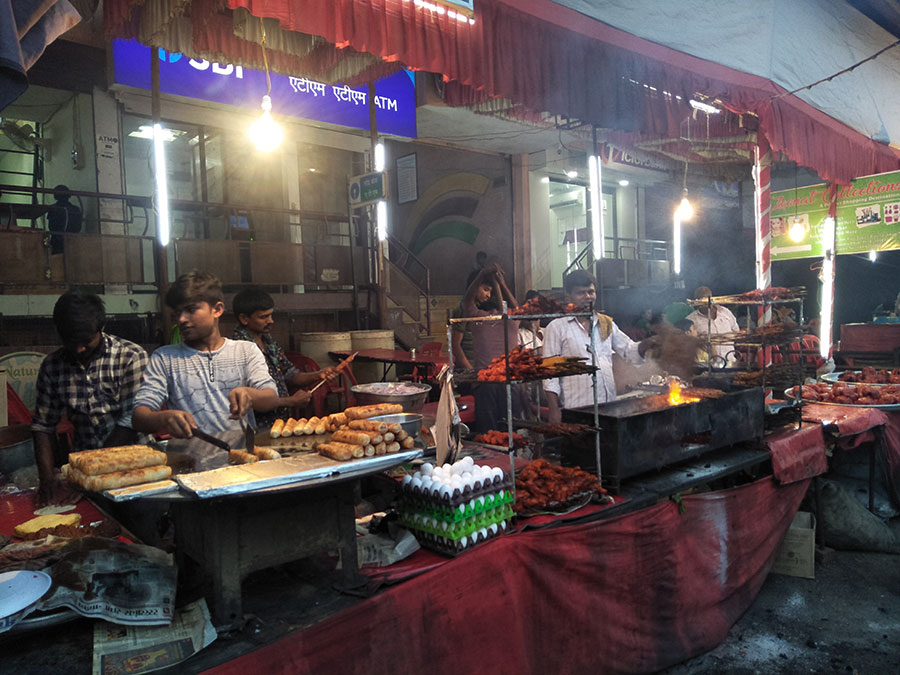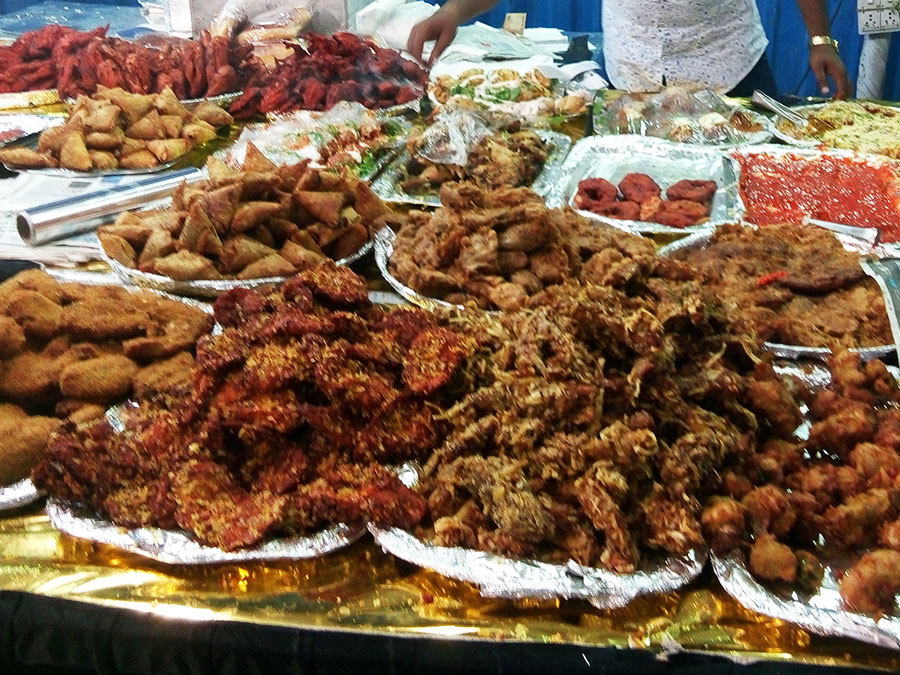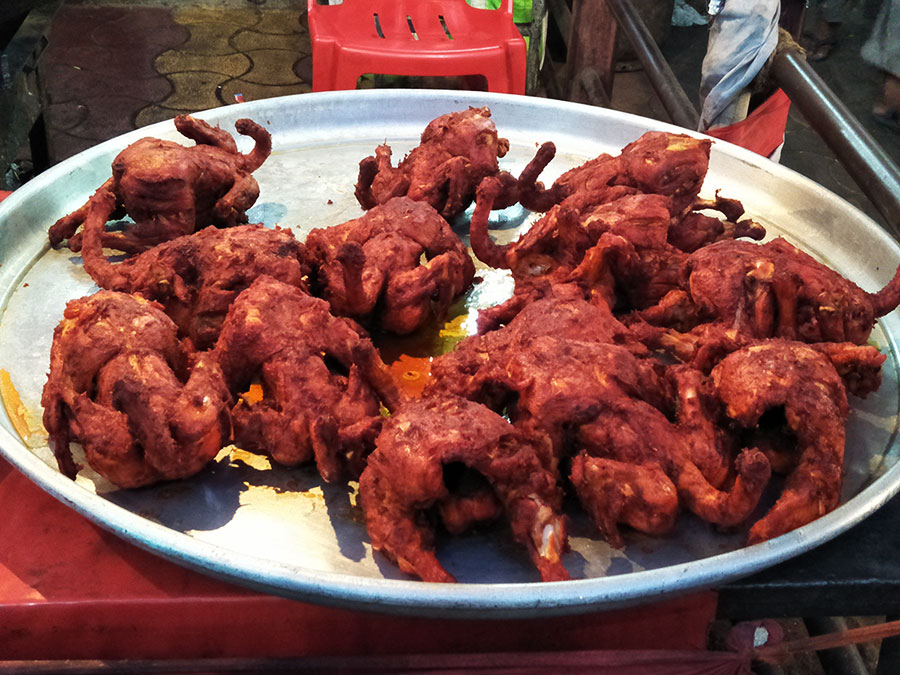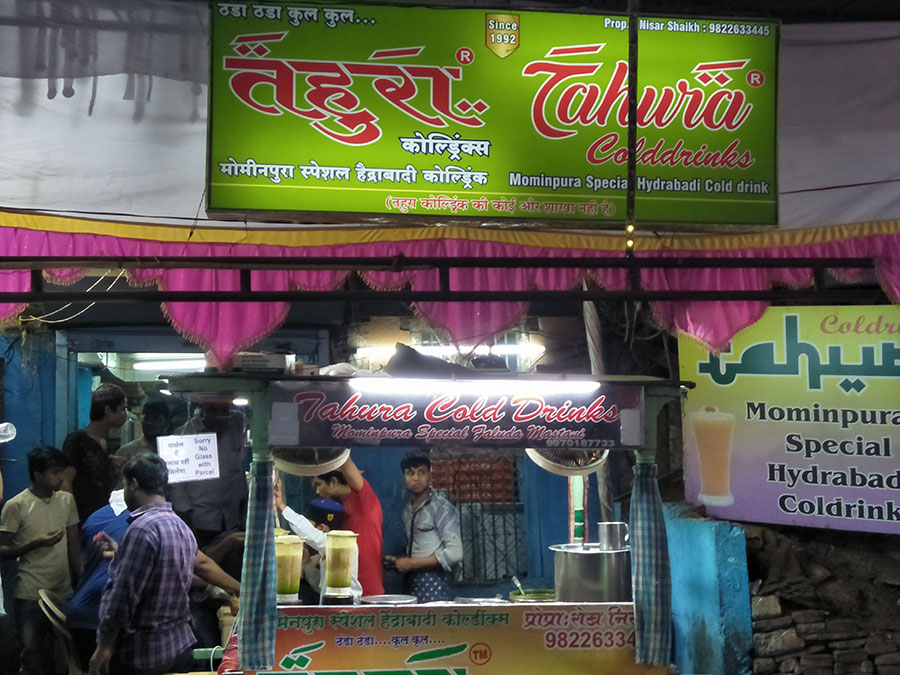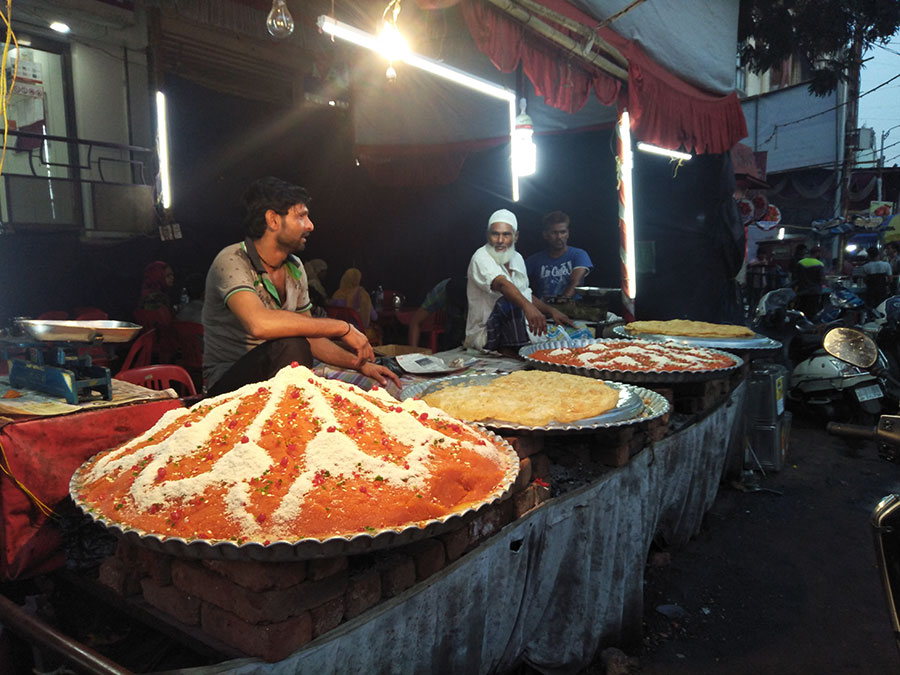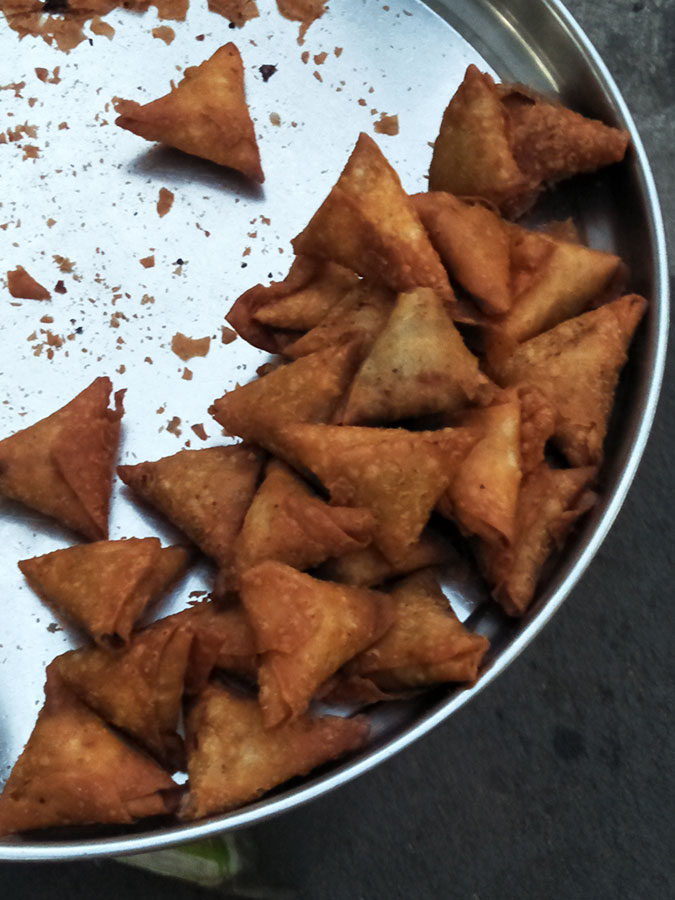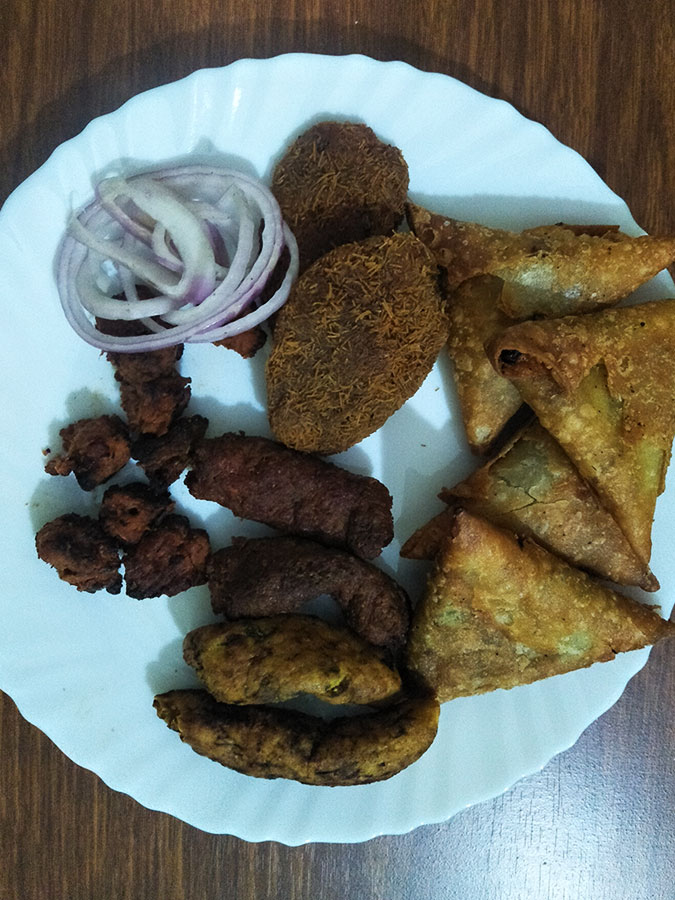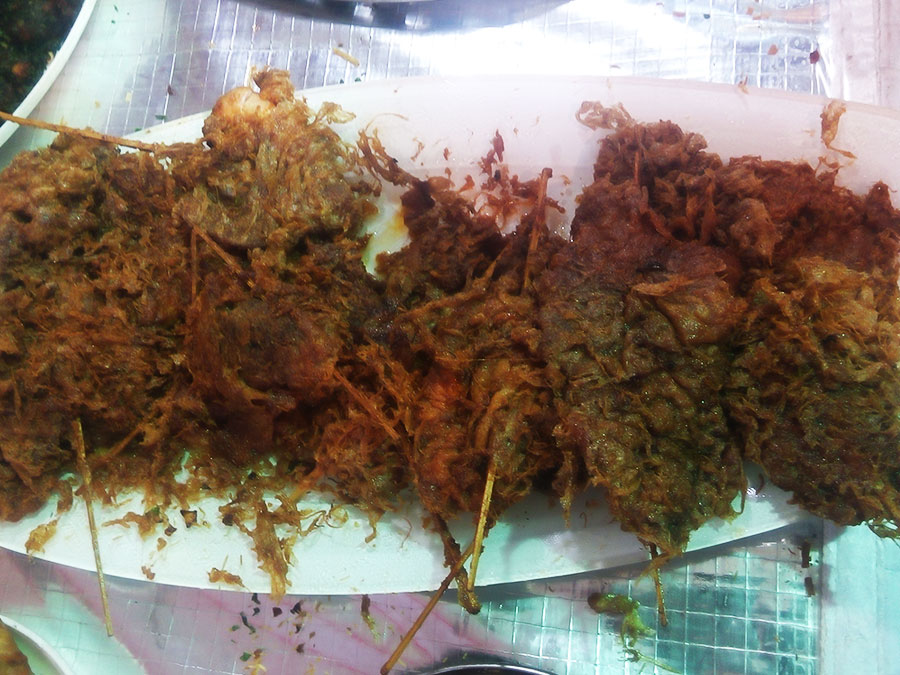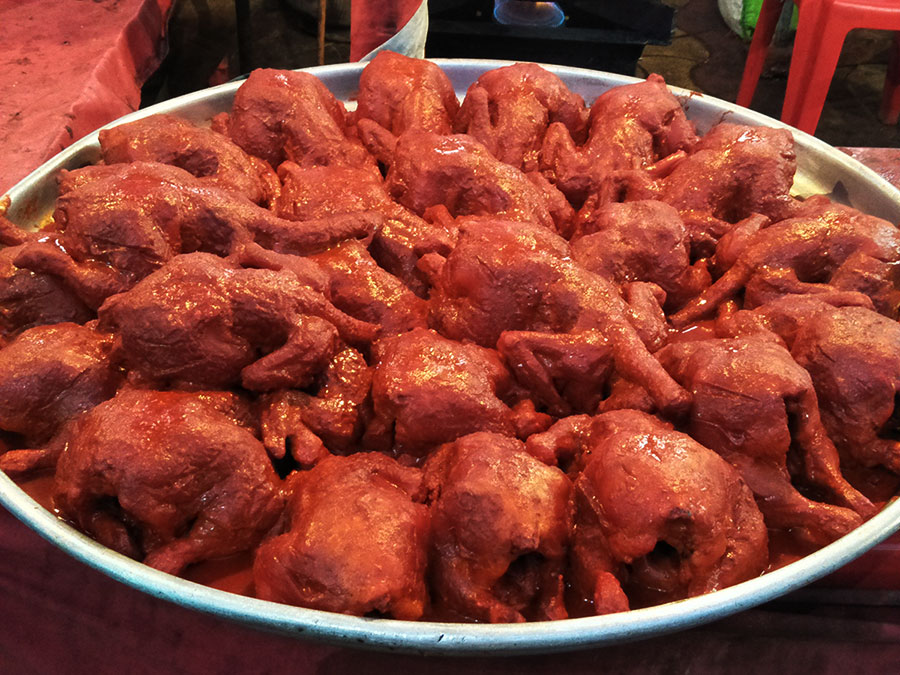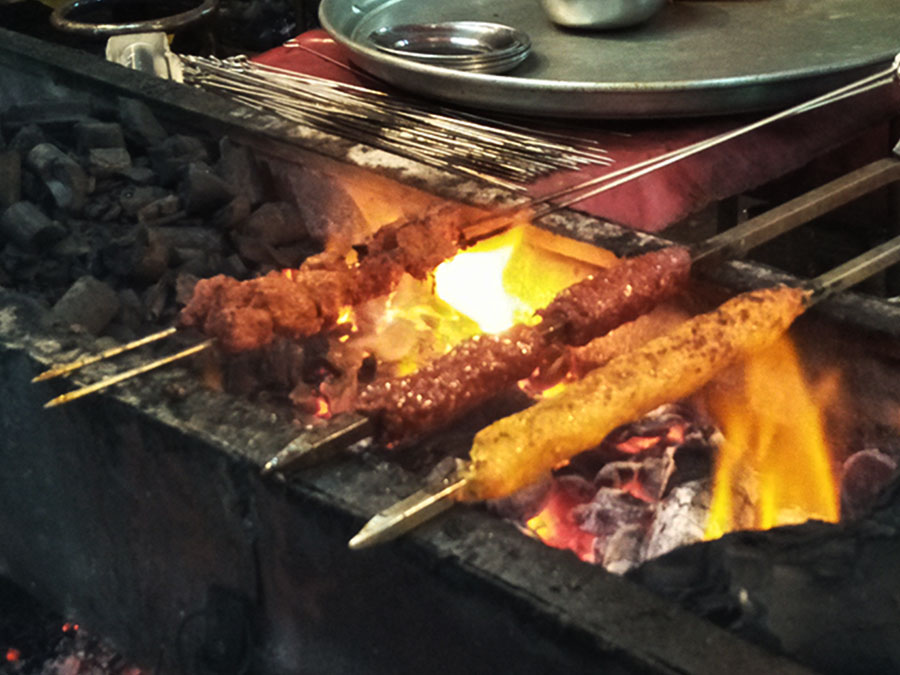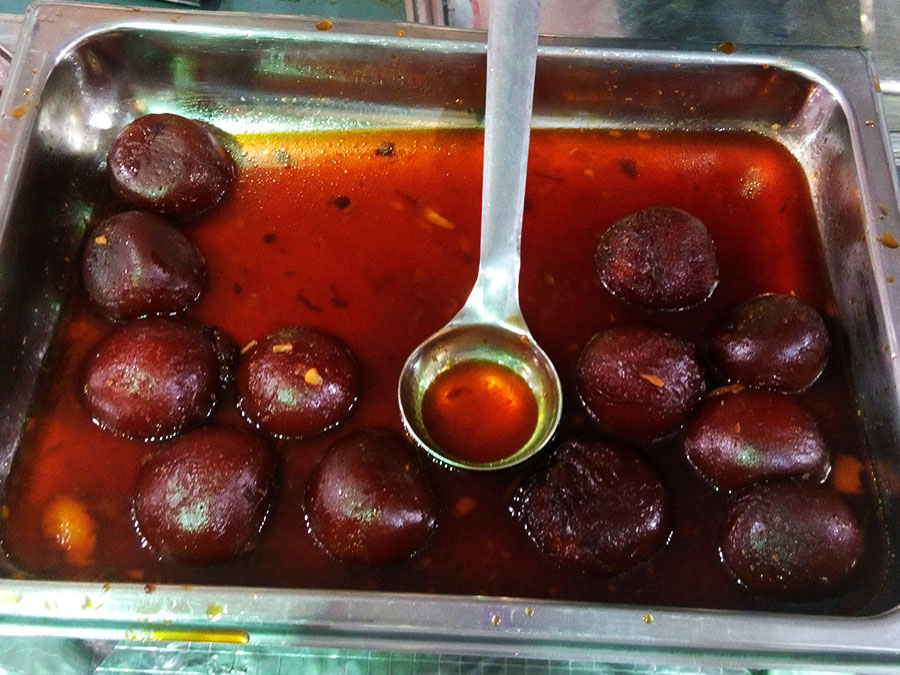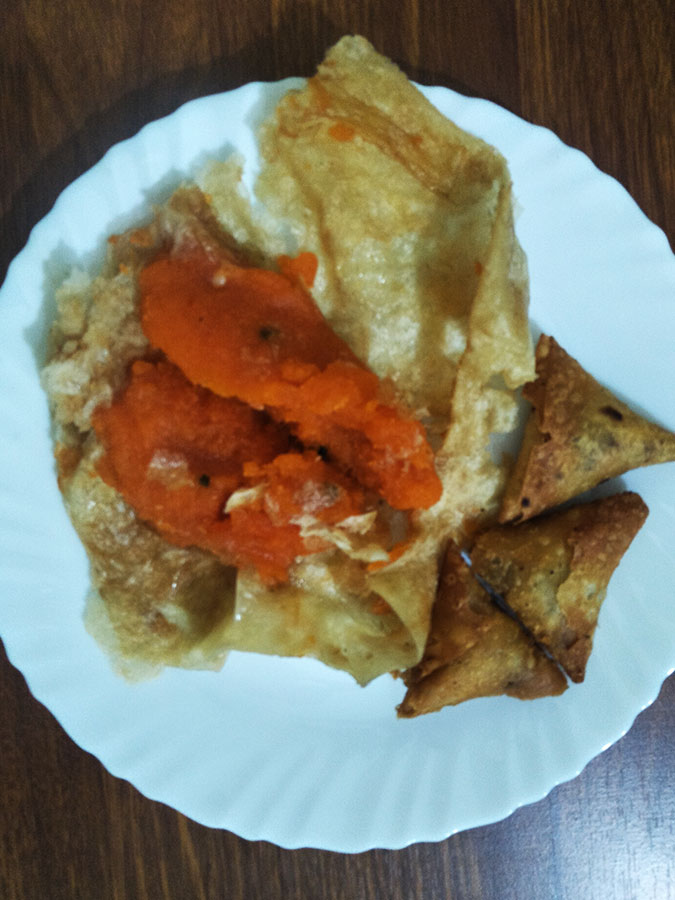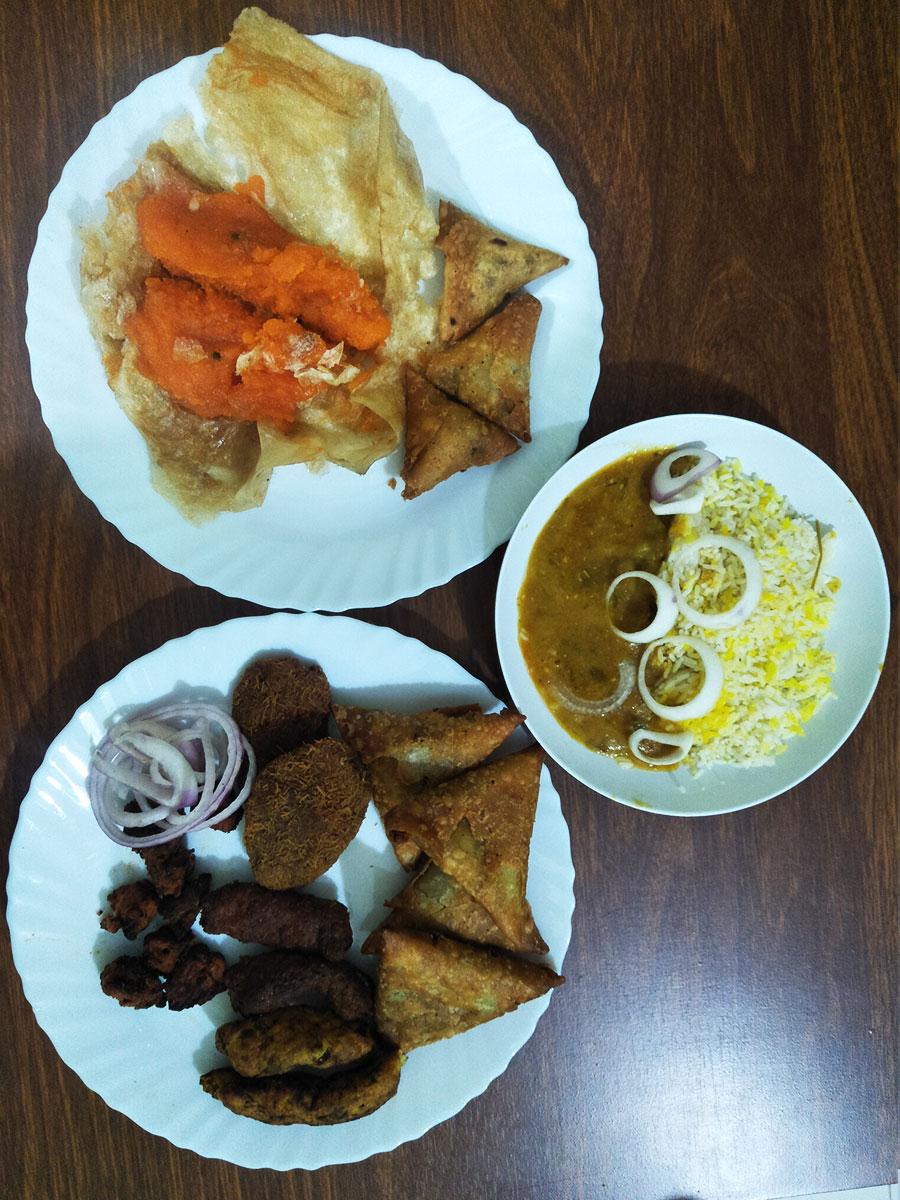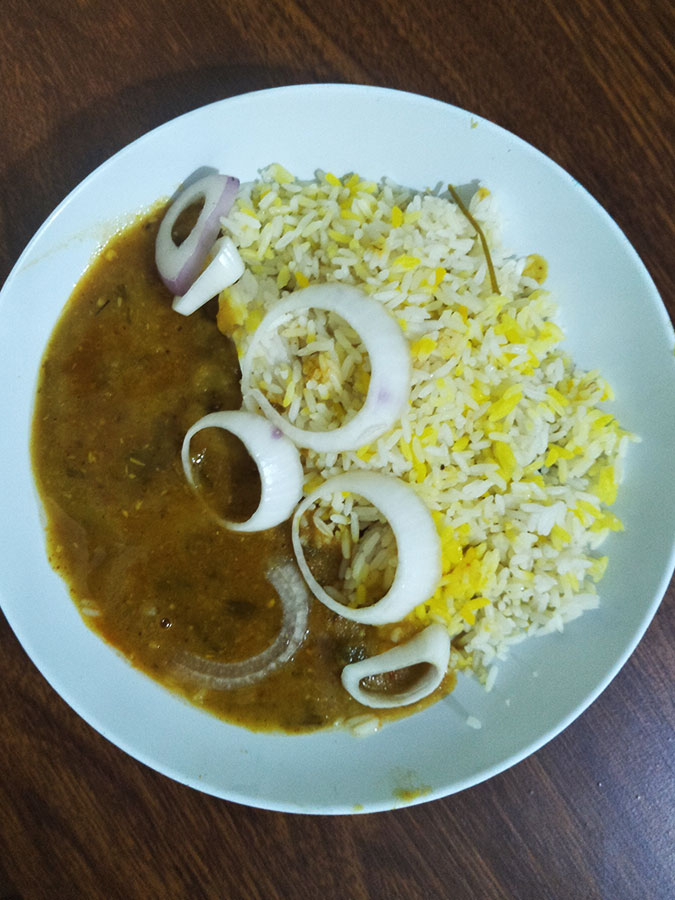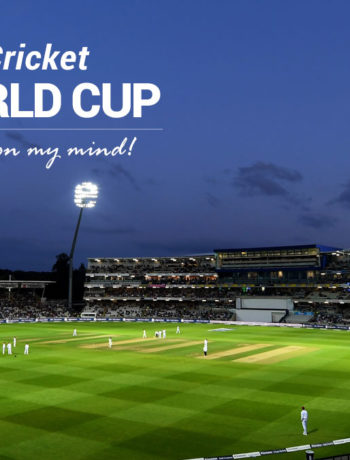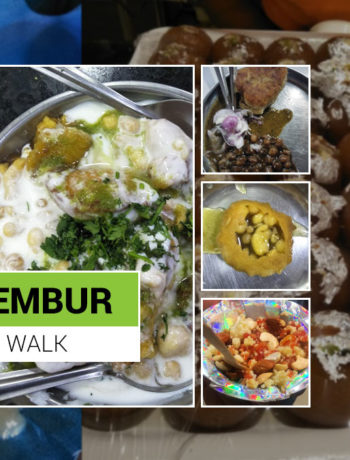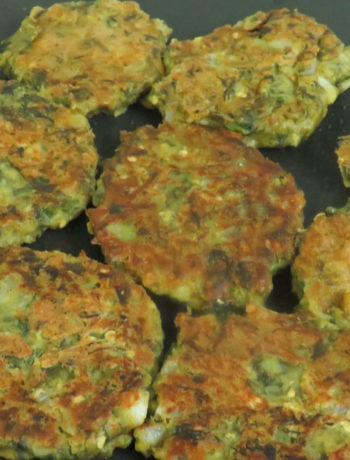Iftar in Pune
The holy month of Ramzan is observed by Muslims all over the world. During this month, Muslims fast from sunrise to sunset. In this period of fasting even drinking water is not allowed. At sunset the fast is broken with some dates and other fruits and the Maghrib prayers are offered. Post the prayers, it’s mealtime. There is no restriction on eating food after sunset.
This makes evenings the best time to visit the Iftar food stalls and we did exactly that. The sight is simply amazing. Stalls lined up with all kinds of food ranging from varieties of kebabs, chicken cutlets, mutton and chicken khichdas, biryanis, pulao, kaadigosht, makka roll and what not. Jaw dropping spread.
After reaching Kondhwa’s Iftar stalls and getting a parking (it is difficult to get a parking as the place is crowded) we decided that instead of letting ourselves in for just one type of food item, we would rather make it a point to try all of them or at least as much as we can. Meat fills up your stomach fast, so it would not have been the right decision to have too much any one dish. And honestly, most of the food items in Iftar stalls were the non-vegetarian ones covering chicken, lamb (mutton), teetar, fish; ummmm did we miss out anything. Ofcourse we would not get the Octopus there.
With this in mind, we browsed through the different stalls and then halted at one to try out the mutton kheema samosa. A few layers of thin crispy shell of maida covering the kheema and deep fried. The kheema in this is cooked in a lot of oil along with onions and a good quantity of garam masala and of course mint leaves. It reminded of the evenings spent at the erstwhile Naaz Cafe at M G Road, Pune savouring similar mutton samosas with the Irani tea / chai on repeat.
Next on the list was the chicken cutlet. The chicken cutlet was beautifully well cooked and melted easily in the mouth. The cutlet is covered in semolina and then fried to give it the crispiness on the outside and the melt in mouth feeling on the inside. Very light brown in colour, it is a very typical cutlet available at a lot of Irani restaurants or restaurants run by Keralites or Muslims.
The next thing on our food list was the Kaadigosht. Kaadi is nothing but a thin stick that is pushed into the chicken meat marinated with different types of spices and deep fried in oil. Though the taste stayed in our mouth, but so did the oil. We found it a little too much oily, but who cares about that when the food is meant to be oily and spicy. It’s not the low calorie and healthy food stuff that can be expected at these stalls, here it’s all about taste. Even if the taste comes with a lot of oil and spices that could add up to a few extra calories, we were up to it motivated by the beautiful food and the smothering smell around.
We moved on to another stall after this and the next item we tried was the makkaroll. Makka means corn in Hindi, so this was basically chicken marinated in a variety of spices and then covered with corn and of course deep fried. This was some bit of innovation. The chicken was well cooked, the mix of spices was perfect and the outer layer of corn gave a crispy feeling which did work wonders on your taste buds.
A new thing that we saw at the stalls, to our surprise, which is away from the regular cutlet stuff, was the Chicken Satay. Satay comes from East Asia and is a delicacy at any Thai or Indonesian restaurant around here. It is basically delicate pieces of meat (anytype) put on to bamboo skewers, which is then barbequed and served with a peanut sauce. Frankly, we did not dare to go that way, so were happy to just see the chicken satay, smile and walk away.
Next were the kebabs. There were rows of different types of kebabs. Uncooked meat marinated in different kinds of spices stuck on metal skewers (Seekh, hence the name Seekh kebab) and kept in rows. You can choose the type of kebab you want to have which is then prepared on the coal chulha(barbeque). The coal chulha adds up the smokey taste to the kebab. We tried the mutton seekh kebab. It was well cooked but we did feel that the meat could have been slightly tenderer. But that was fine. It was still a food worth trying. The green chutney with the kebab definitely added up to the taste. We were specifically looking for boti kebabs. To our disappointment, could not find them anywhere.
After all the chicken and mutton starters that we had tried, we were quite full. But we couldn’t just stop without trying the Haleem. So, we decided to move onto the main course. We were lucky enough to get the last bowl of Haleem at one of the stalls. Haleem gets sold out quickly because of its high demand and the fact that not a lot of quantity is prepared. The reason being that a lot of effort and time goes into its preparation. Haleem is a stew made up of wheat, barley, different types of spices and of course meat. It takes around 8 to 10 hours of slow cooking so that it reaches a smooth texture. We would vote that Haleem was the best dish of the day. Topped up with crispy fried onions and fresh coriander along with spices like – cardamom, cinnamon, black peppers. Everything that had gone into its preparation could be distinctly felt in the mouth with every spoon. So no regrets on this one at all, only part being we could not get the mutton Haleem so had to do with Chicken.
You cannot just finish the meal at a place like this without trying a Biryani. Hence, the next item in the menu had to be the mutton biryani. Well-cooked mutton in an aromatic rice it was. The rice looked fresh with colours of saffron and white and it surely was the right way to end up the main course.
We wanted to try the beautiful gulab jamuns for dessert. But we just couldn’t as we were too full. We had to just satisfy ourselves with the sight of the beautiful desserts lined up. The gulab jamuns were definitely very big as compared to the regular ones we see in restaurants.
There were other things to try like Tandoori Teetar, surmai fish fry, meat rolls and lots of other gravies with meat. For bread there were tandoori rotis, roomali rotis, chapatis, etc., so almost the regular fare.
There are other places in Pune too, like Mominpura. This is probably the oldest. One gets caterers, selling their wares, for longer than 50-60 years. Its not only Pune caterers who set up stalls here, it is people from Mumbai etc also who drop down at such times. The chefs, I am told are brought in depending upon what their speciality is. The chefs are from Lucknow or Hyderabad or Mumbai and so many different places.
People irrespective of their religion or community were lined up in these food stalls. The outlets had made decent places to sit and have food also. Now, the next plan that we have is to try out the wide range of food prepared on Eid-ul-Fitr – festival marking the end of the holy month of Ramzan.

